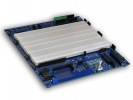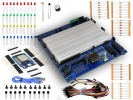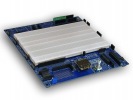No products
BLOG NEWS
Search on blog
Follow us on facebook
Top sellers
-

Proto Shield Plus STARTER KIT
This kit is the ideal solution for those who want to start to prototype...
69,90 € -

Proto Shield Plus LCD KIT
Prototype with ARDUINO / GENUINO boards without having a lot of wires...
56,00 € -

SMD to breadboard adapter (10 pcs pack)
Easily adapt SMD devices to 2.54mm prototyping breadboards.
3,90 € -

Proto Shield Plus BASE KIT
Prototype with ARDUINO / GENUINO boards without having a lot of wires...
52,00 €
The Onboard Speaker of the IoT Proto Shield Plus
Published : 04/01/2022 09:32:25
Categories : IoT Proto Shield Plus , Proto Shield Plus
The onboard SPEAKER of the IoT Proto Shield Plus
The SPEAKER can be used as a buzzer or to create frequency modulated tones.
It can also be used to play mp3 files in addition with the MP3 Mini Player, but in this article we will see how to use it as a buzzer or to create frequency modulated tones.
SPEAKER Section of the IoT Proto Shield Plus 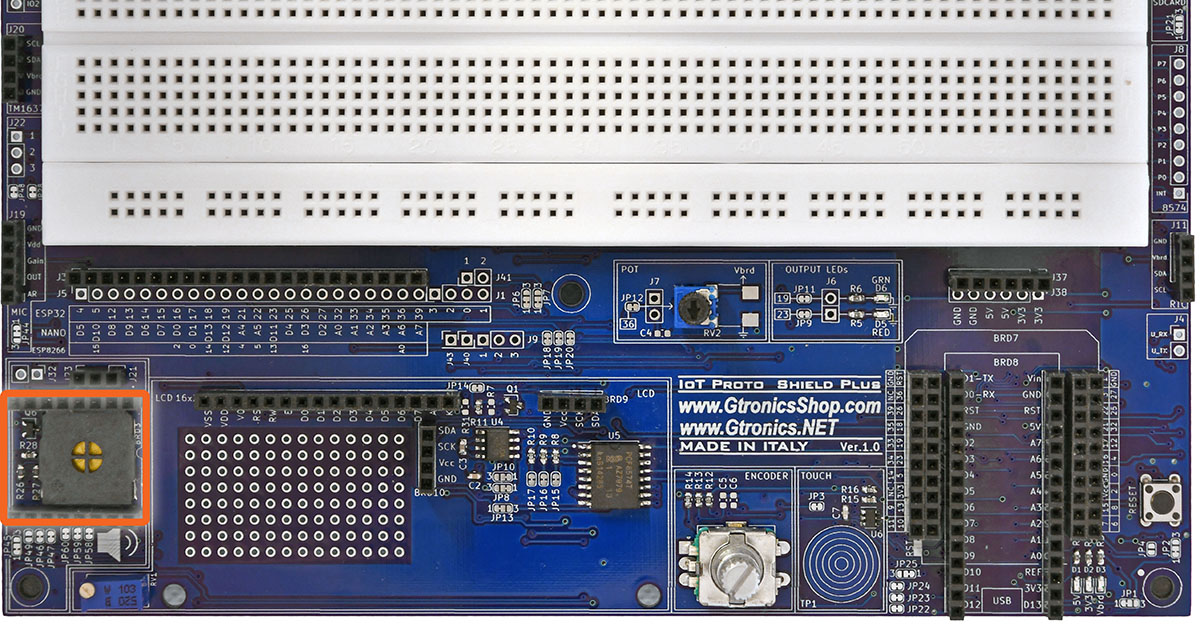
Since the speaker is primarily used to play MP3 files in addition with the MP3 mini Player, to use it to play frequency modulated tones two jumper wires are required.
Schematic of the IoT Proto Shield Plus SPEAKER Section 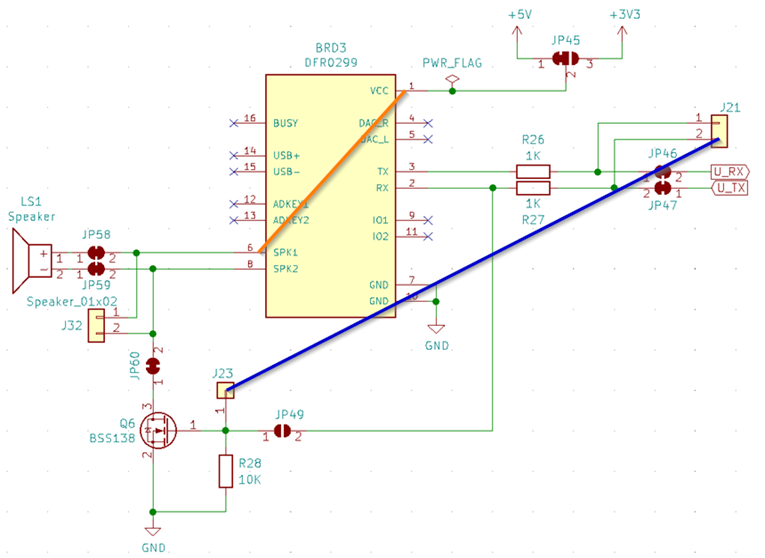
To let the SPEAKER work as a tone buzzer you have to:
- Remove the DFPlayer Mini MP3 module from the BRD3 socket (in case you are using it)
- Use a jumper wire to connect BRD3 pin #1 (Vcc) to BRD3 pin #6 (SPK1)
- Use a wire to connect J21 pin #2 to J23
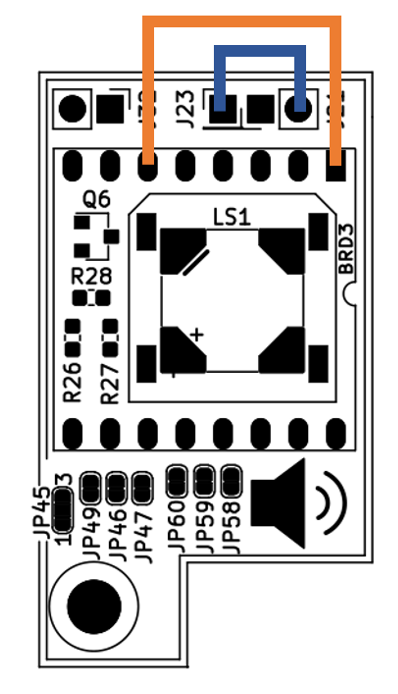
Default connctions
According to the above schematics, U_TX will drive the buzzer tone. U_TX connects by default to the following pins:
![]()
Sample Sketches
Download the sample sketches by clicking here.
Location: IoTPSP_Sample_Sketches/IoTPSP_SPEAKER
Use the IoTPSP_SPEAKER_NANO sketch to test the SPEAKER with ARDUINO NANO boards.
The IoTPSP_SPEAKER_NANO is based on the tone() function of the Arduino base library.
Information about the Arduino tone() function can be found at this link: https://www.arduino.cc/reference/en/language/functions/advanced-io/tone/
The function does not work on NANO33 BLE (at least at the moment of writing this article).
Use the IoTPSP_SPEAKER_ESP32 sketch to test the SPEAKER with ESP32 boards.
The IoTPSP_SPEAKER_ESP32 uses the Tone32 library. The library is downloadable at https://github.com/lbernstone/Tone32
A copy of the library is also contained in the sketch folder.
Use the IoTPSP_SPEAKER_ESP8266 sketch to test the SPEAKER with ESP8266 boards.
The IoTPSP_SPEAKER_ESP8266 is based on the tone() function of the Arduino base library.
Information about the Arduino tone() function can be found at this link: https://www.arduino.cc/reference/en/language/functions/advanced-io/tone/
Related products
5V and 3V3 on the IoT Proto Shield Plus board
Read more
Published : 02/04/2022 08:40:16Introducing the new IoT Proto Shield Plus
Read more
Published : 11/11/2021 08:34:28The IoT Proto Shield Plus Layout
Read more
Published : 12/17/2021 09:12:04The Onboard Touch Sensor of the IoT Proto Shield Plus
Read more
Published : 03/25/2022 08:46:46Using the IoT Proto Shield Plus with Arduino and ESP boards
Read more
Published : 02/11/2022 08:36:34Working with the onboard LEDs of the IoT Proto Shield Plus
Read more
Published : 02/25/2022 08:14:32The onboard Potentiometer of the IoT Proto Shield Plus
Read more
Published : 03/11/2022 08:37:07The Onboard Encoder of the IoT Proto Shield Plus
Read more
Published : 03/18/2022 09:55:54

 USING A 16x2 LCD DISPLAY WITH THE IoT PROTO SHIELD PLUS
USING A 16x2 LCD DISPLAY WITH THE IoT PROTO SHIELD PLUS  What does Paolo Aliverti say about the IoT Proto Shield Plus?
What does Paolo Aliverti say about the IoT Proto Shield Plus?  USING AN SSD1306 128x32 OLED DISPLAY (I2C type) WITH THE IoT PROTO SHIELD PLUS
USING AN SSD1306 128x32 OLED DISPLAY (I2C type) WITH THE IoT PROTO SHIELD PLUS  USING AN SSD1306 128x64 OLED DISPLAY (I2C type) WITH THE IoT PROTO SHIELD PLUS
USING AN SSD1306 128x64 OLED DISPLAY (I2C type) WITH THE IoT PROTO SHIELD PLUS  I2C Bus on the IoT Proto Shield Plus
I2C Bus on the IoT Proto Shield Plus 